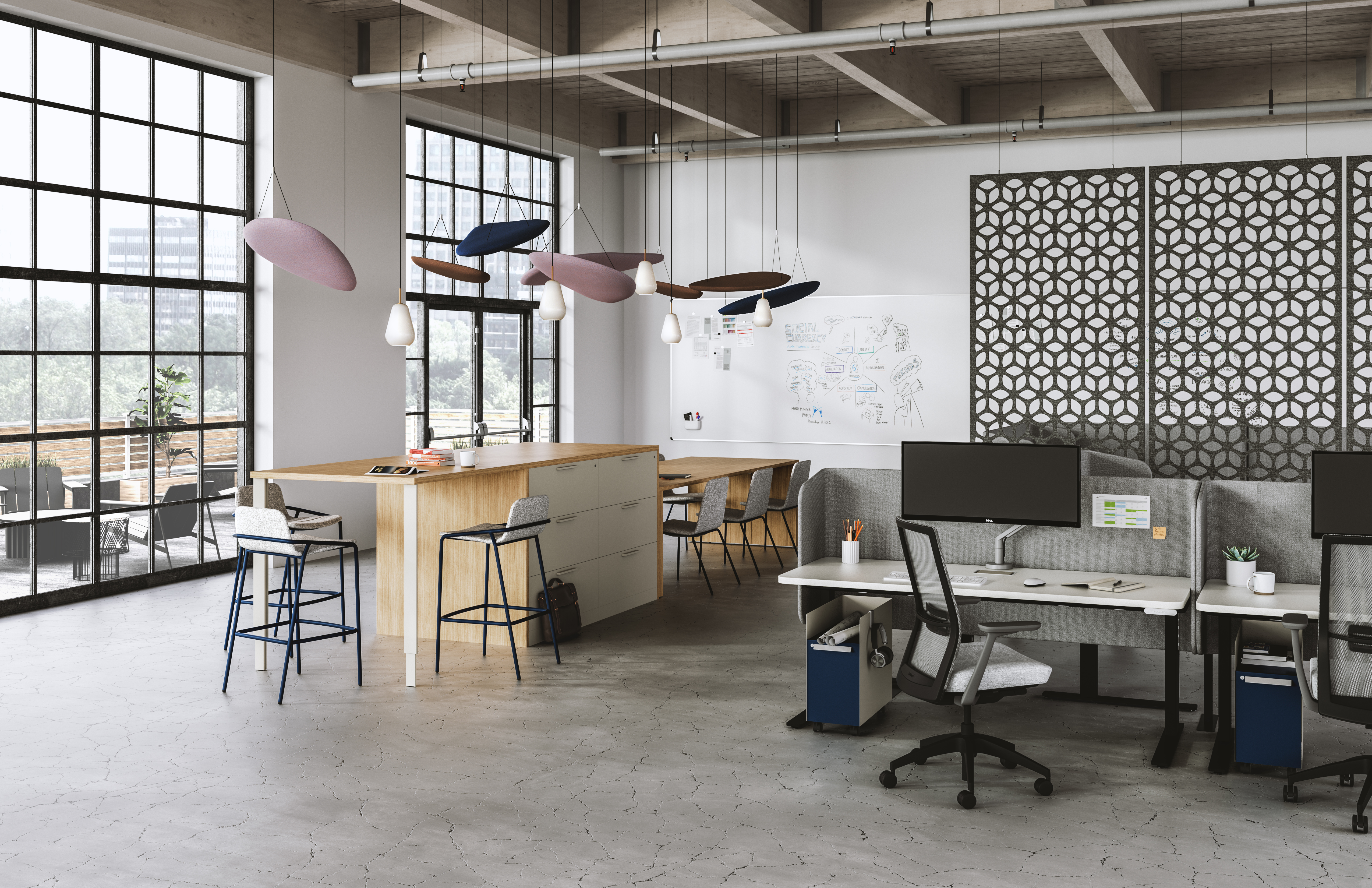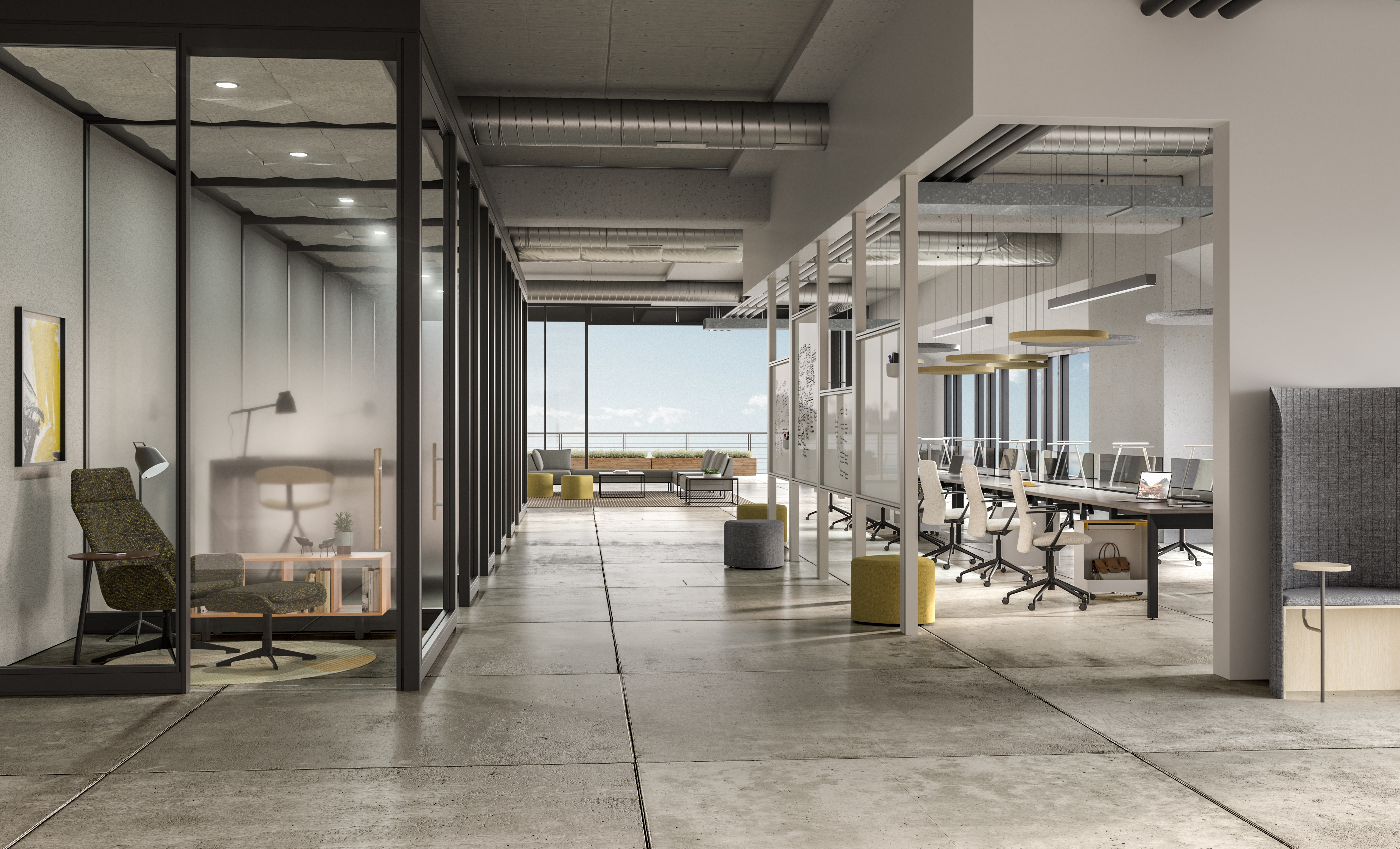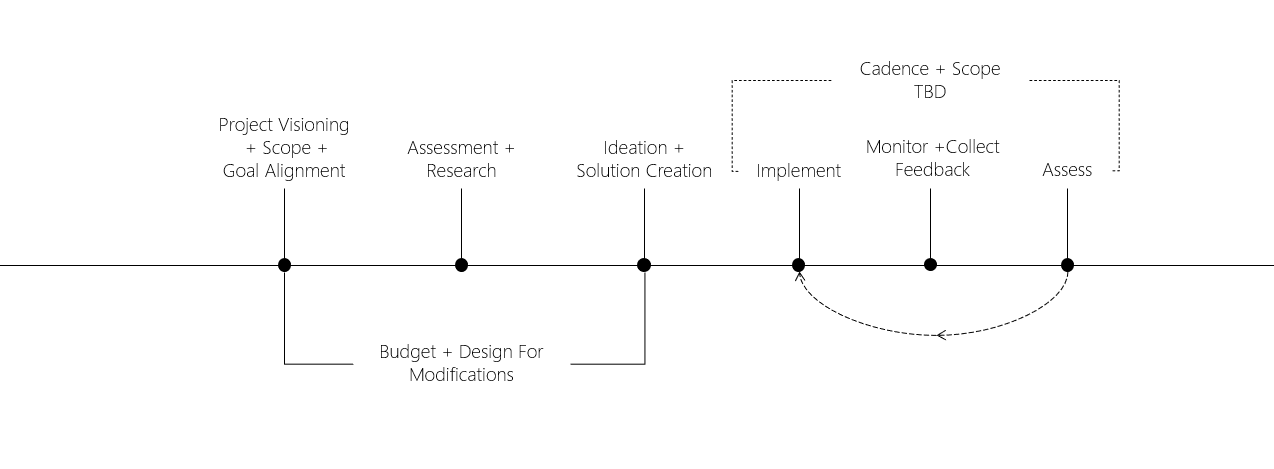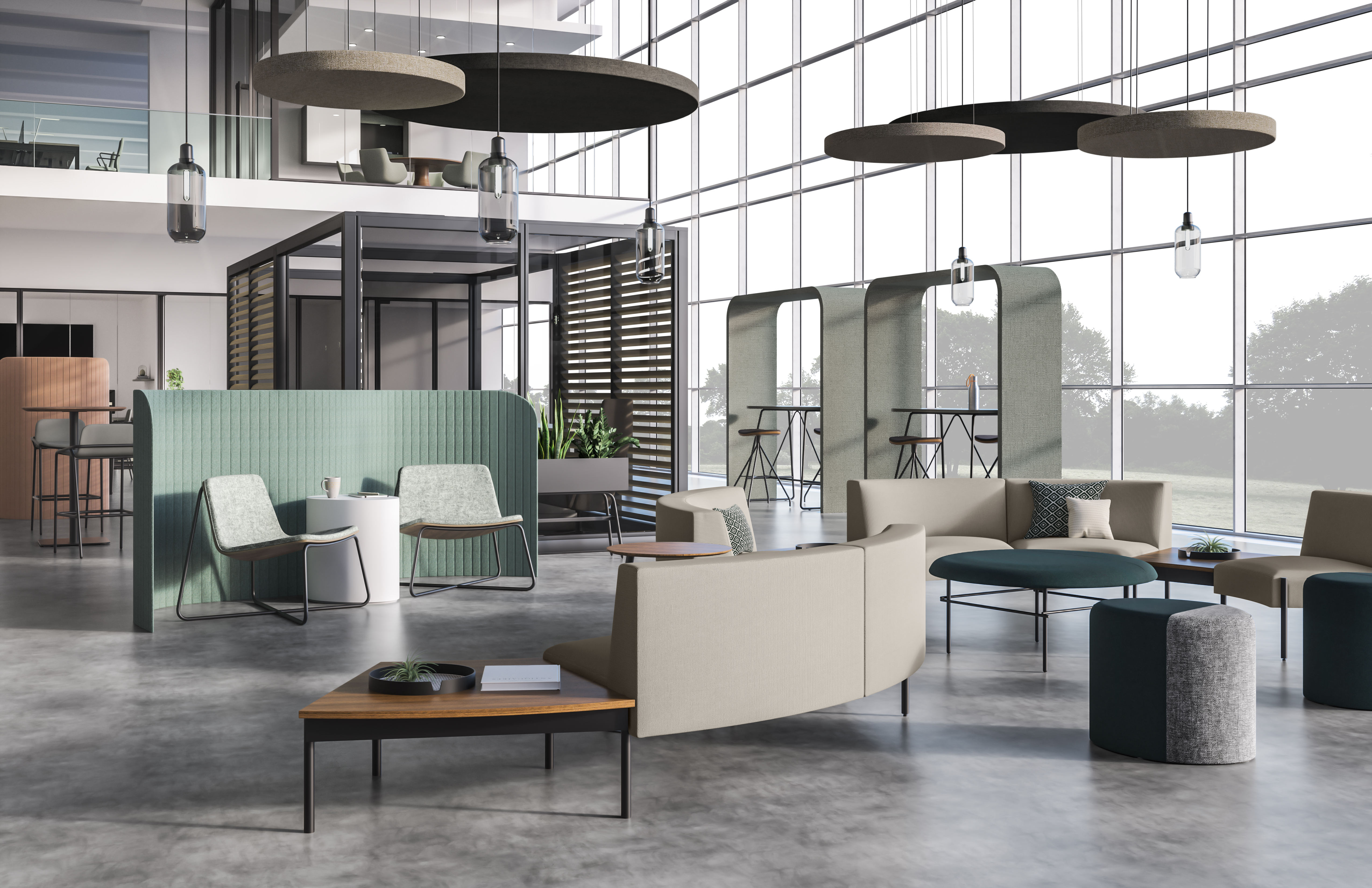
Download the PDF Copy
Download
The idea that we’ll completely “get it right” in one take, is overly optimistic.
A “set it and forget it” approach to the workplace is both antiquated and poor management of a significant investment. How we work has evolved. The computer, the internet, and the pandemic have all impacted how and where we work. Workplaces should be designed to evolve in step with changing worker needs and expectations. We can create a workplace system that supports the work of today and anticipates the work of tomorrow. That is Living in Beta.
A typical project’s process includes four major milestones:.
1. Project Visioning, Scope, and Goal Alignment
2. Assessment and Research
3. Ideation and Solution Creation
4. Implementation.

After implementation, you may see a few minor tweaks, but ultimately the workplace is not changed until it is seen as outdated, and another major refresh is initiated.
A Beta Program’s process incorporates the same milestones as a typical project but goes further by planning a cadence of future check-ins and mini refreshes. During the Project Visioning and Goal Alignment phase, the initial concept for the Beta Program is outlined and then refined throughout the project process until implemented with Day 1 occupancy.
Decisions around design strategies and, assessment tools to utilize, cadence, scope, and budget will all be made before implementation.

A few design strategies that you could incorporate into a Beta Program are:
• Hackable Spaces: Spaces designed to allow users to reconfigure the furniture to fit their needs.
• Furniture Kit- of- Parts: A selection of furniture components designed to be reconfigured, typically by facilities.
• Spatial Kit- of- Parts: Using a common space size, design multiple options that can be installed within that space. This allows for quicker turnover as functional needs change.
MUR-122 | Allsteel (allsteeloffice.com)

Two types of assessment tools we recommend for data collection are Utilization Technologies and End User Feedback. There are a number of technology options you can leverage to collect data on if and how spaces are being utilized. Starting with what you want to know can help point you towards the appropriate technology to use. Badge swipes can tell you how many people came into the office, but they don’t give you insight on where they went in the office and how long they stayed there. Looking at Outlook calendar reservations doesn’t provide insights as to how long the space was actually occupied or how many people attended. Utilization data gives you an additional layer of actionable information.
End User Feedback is the human piece of the utilization puzzle. It’s the “why.” Without this piece, the puzzle is incomplete. It also has the added bonus of making people feel valued and supported.

Why do we believe you should “Live in Beta”?
Living in Beta is about User Experience and Optimization.
Under User Experience you’ll see:
• Employees providing feedback keeps them engaged in the process.
• No longer making do with what they have, workers will be more productive as they will have the right “tool” for the job. The spaces they use will be designed to support their work processes.
• As those work processes change, the spaces will evolve with them.
• Employees will feel valued by the organization because they will see the results of their engagement in this process.
Under Optimization you’ll see:
• Real-time data and insights. We can set a cadence to analyze that data, but if there is a sudden change in usage, we can immediately start to look into the cause.
• More efficient use of space. Spaces that are underutilized will be adjusted. Spaces designed for eight but only ever used by four will be resized and redeployed.
• Changes aren’t just budgeted for but designed into the furniture solutions. This means not all changes will require additional purchases.
• You’re not benchmarking what others have done and hoping it will also work for you. Decisions will be made with confidence because they will be based on data and insights unique to your organization.
A successful Beta Program relies on a company culture that welcomes feedback and embraces change. It requires active participation at all levels of the organization. This, combined with scheduled check-ins to review successes and examine what might need some attention, defined scope and budget, as well as continued communication, creates a workplace system that supports the work of today and anticipates the work of tomorrow.



